If you’re not looking at your phone screen when it happens, you might not even notice.
It’s usually just after the pavement ends, when your front wheels hit the gravel and rumble along the washboard road on a summer day; when you’re rolling down the windows, turning up the music and staring at the gray stone of jagged peaks and the wide-open greens and blues of untouched Montana wilderness laid out below.
The pristine North Fork of the Flathead River slices through this valley, a ribbon of rapids separating 2.4 million acres of Flathead National Forest land and a million untouched acres of Glacier National Park. And next to that river runs this pocked and troublesome road, Montana Highway 486, a thoroughfare into a land dominated by nature and merely survived by humans.
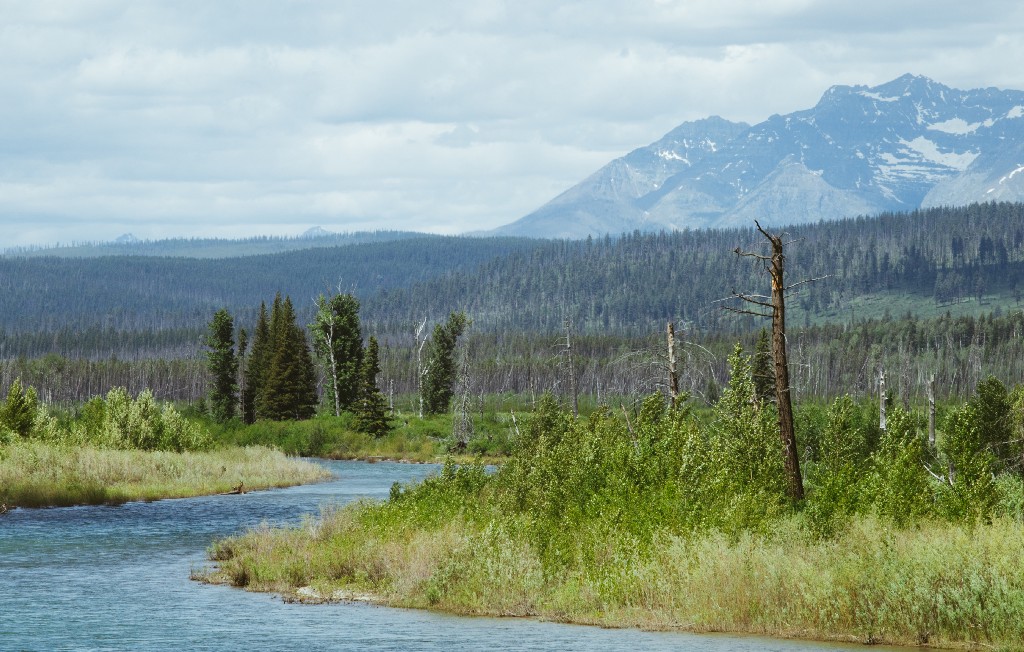
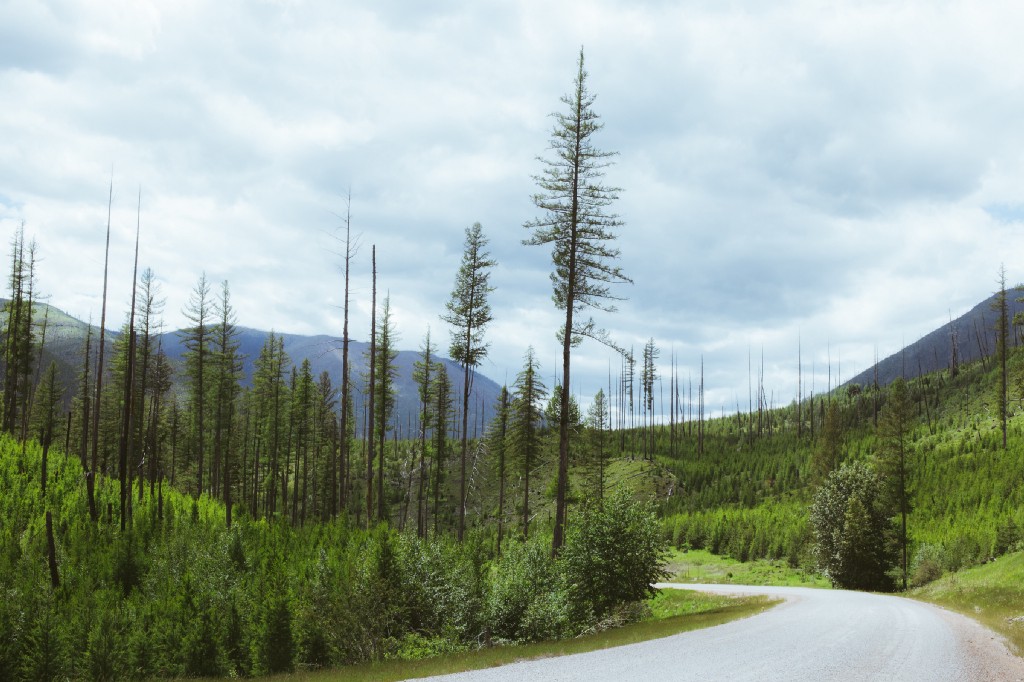
So it’s common to be staring out the window — daydreaming about hardscrabble hikes and clean swims — and not staring at your smartphone screen to see when exactly you lose service.
It’s small, just the flicker of a few pixels, but that disconnection is a major reason many wander their way to the one-shop town at the end of this road, situated in what is considered one of the wildest valleys left in the mainland United States.
Polebridge, Montana is a haven for outdoor enthusiasts and luddites even in a state known for its scenic offerings and sparse population. The nearby communities of Kalispell and Columbia Falls, once driven by the timber and mining industries, are now burgeoning with new life from high-tech and manufacturing businesses making the valley their home, along with booming healthcare and tourism industries. The resort town of Whitefish, about 45 miles away, is a popular ski and summer town boasting some of the most expensive waterfront properties per linear foot of lakeshore in the northwest United States.
So even by the standards of Northwest Montana, where locals are accustomed to electricity, plumbing, and Starbucks, Polebridge is a town frozen in time, but still very much alive.
The North Fork valley is also home to one of the most diverse and dense carnivore ecosystems in North America, with lynx, mountain lion, wolves and wolverines prowling the land, and the region’s hundreds of grizzly bears outnumbering permanent human residents — around 70 people count Polebridge as their home year-round.
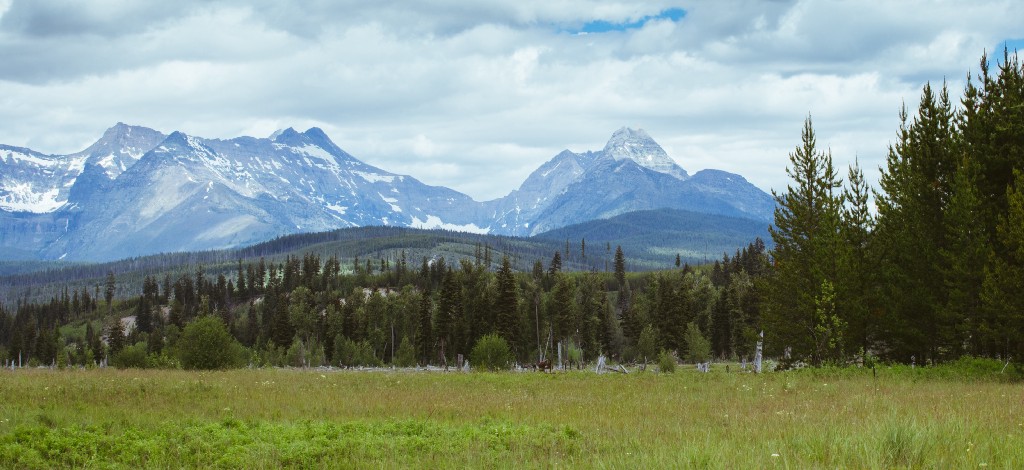
Here, in this old homestead and logging town, a century’s worth of travelers have availed themselves of rest and respite at the Polebridge Mercantile, aka the Merc. The boxy two-story, bright-red building is the fulcrum for the humans of this wild place, a basecamp for adventures, a reward for a long day on the trail, a lifeline for forgotten supplies.
It’s this place, still largely devoid of the three Big Ps — phone service, power lines and pavement — where a pair of friends have traded their former lives for ones comprising early mornings, hard work, evenings playing in nature and the occasional grizzly bear on the soccer field.
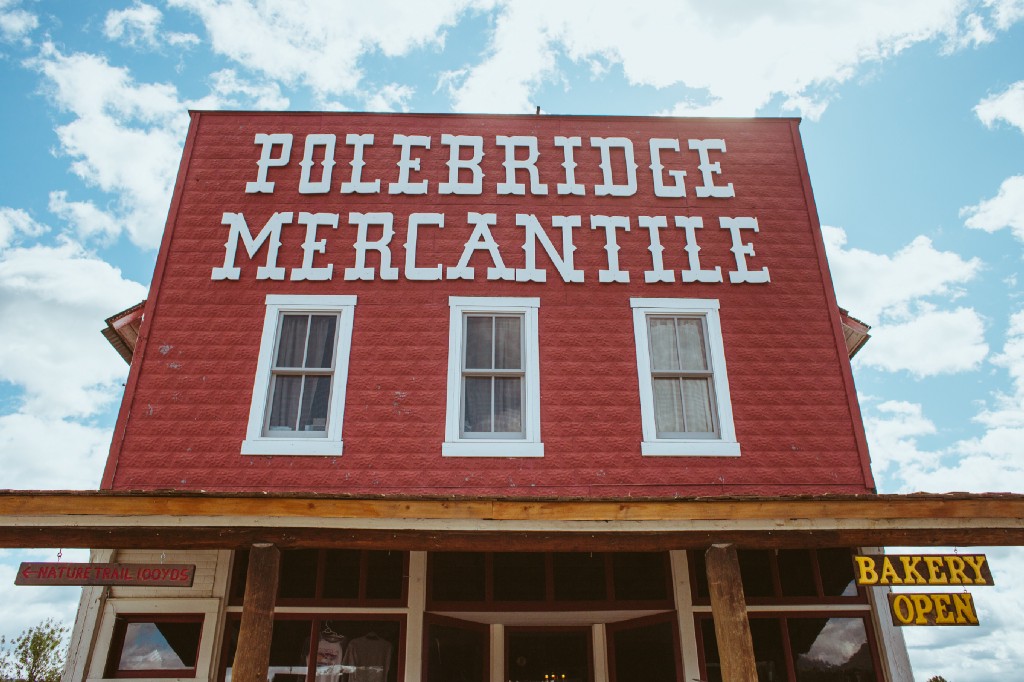
“I’ve always felt a really strong connection here; I don’t think I’m alone in that,” says Will Hammerquist, the Merc’s latest owner. “Here’s this valley that’s hands-down the wildest valley in the lower 48 — it’s always been a place of refuge.”
On a mid-June Sunday afternoon, the Merc was just ramping up to summer operating speed. The crush of the summer crowd, fueled by the more than 2.2 million people who visit the ultra-popular Glacier Park directly next door, hadn’t quite started, and Hammerquist found some time to brush the winter coat off Duke, a handsome 1-year-old Great Pyrenees with a penchant for protecting his people from the local bears.

Hammerquist is on the side of the one road leading to the Merc, adding to an already-massive pile of white fluff, but like most chores around here, this one will have to take a backseat to a more pressing problem.
Inside the Merc, tourists and locals mingle around the shelves offering everything from bear spray to Spam to condoms, waiting to buy scratch-made pastries warm from the kitchen in the back, where Katarina, Hammerquist’s wife, runs the show. The pastries from the Merc’s bakery are one of the mainstays of the business, especially the Merc’s well-known and highly prized huckleberry bear claws.
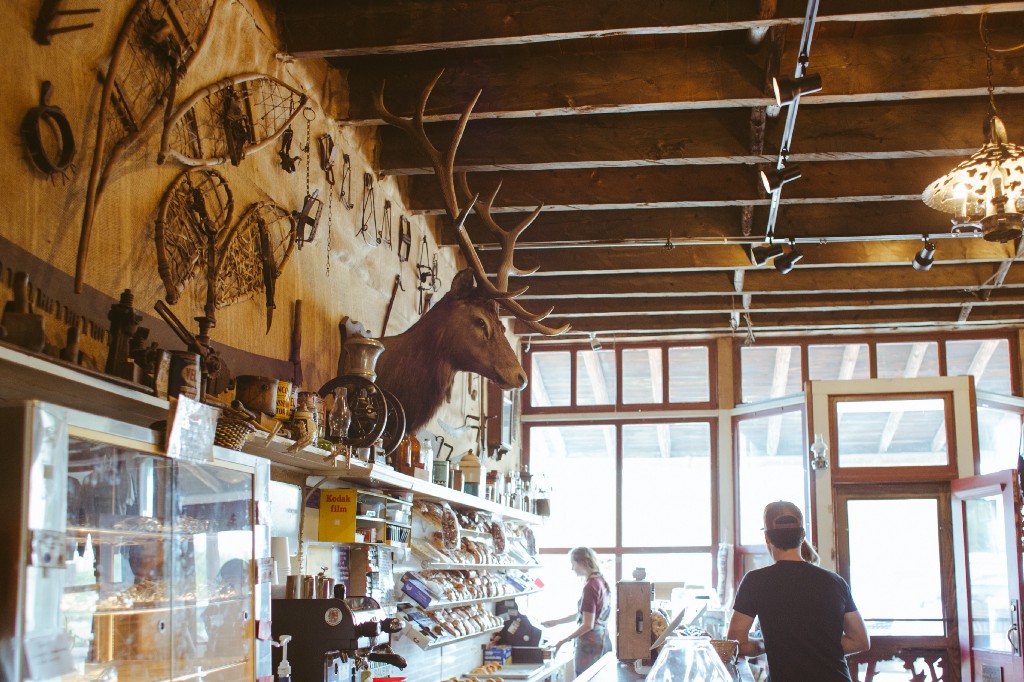
Hammerquist estimates that they’ll bake and sell anywhere between 200 and 300 of the bear claws every day, while also providing other pastries and goodies, such as some truly hearty sandwiches.
Hammerquist weaves through the relatively thin morning crowd with ease and a smile, chatting up his neighbors before sitting with his operations manager, Jayson O’Neill.
There’s a problem with Google Maps, O’Neill informs him. It’s routing people two hours out of the way to get to Polebridge, and has been all day.
The two look at the desktop computer wired to the wall. It has satellite internet capabilities, processing at a whopping 10 megabits per second. Normally they wouldn’t bother, but it’s the main way people find them, and once someone crosses into the North Fork, there’s no connectivity to adjust the directions.
“It’s not The Revenant around here,” Hammerquist says. “We’ve got a lot of technology. It’s a mix of old and new, kind of like how they have dinosaurs in Star Wars.”
Both Hammerquist, 36, and O’Neill, 37, look the part of the rugged mountain hippie, with long beards, long hair and worn clothes. But both ended up here after cutting the cord on lives that revolved around phones, email and politics.
They’ve been friends since their days at Montana State University, in Bozeman; about seven years ago, they decided to buy a parcel of land in the North Fork together.
It would serve as a vacation spot for the friends, though much of the first few summers were spent getting up a yurt and making the lot livable. At the time, O’Neill was working in communications for then-Montana Gov. Brian Schweitzer. That meant near-constant contact with media, with the rest of the public, and living according to the agenda items on the governor’s schedule. He visited Polebridge from the state’s Capitol in Helena, five hours away in good weather and on good roads, O’Neill said, and the forced disconnection helped him tap back into his life.
“[In Polebridge] I could focus on things that matter,” O’Neill said. “I was too plugged in.”
Hammerquist, too, was glued to his digital life, despite working for the National Parks Conservation Association (NPCA) as the Glacier field office manager. His work dealt with the outdoors, but it still kept him inside and captive to a timesheet. He had been working as the manager for a local rental car company for a couple of summers when the Merc went up for sale.

At the time of their property purchase, the 40-year fight to protect the North Fork from drilling and mining was nearing its apex, with the governor working with groups like the NPCA and counterparts on the Canadian side of the valley.
Both men said they worked on the issue for their respective employers with particular fervor, after they’d found such deep connection with the valley. In 2014, President Obama signed the North Fork Protection Act into law, banning future mining and drilling on more than 383,000 acres of federal land.
Hammerquist purchased the Merc not long after, becoming the historic building’s 10th owner the year it turned 100. O’Neill moved on to a job in communications for the state’s Department of Agriculture, which he quit in May to make the leap to Polebridge.
“A national park on one side and one of the most undeveloped national forests on the other and a river in the middle?” O’Neill said. “It was a pretty easy decision.”
It’s easy to idealize the concept of moving to the middle of nowhere and making a go of it — living off your wits and the land — but putting it into practice is a whole other matter. There may be baked goods every morning, but there is no pie in the sky.
“There’s no person every morning saying, ‘Why are you 10 minutes late?’ but no one is going to tell you to get up,” Hammerquist said. “This to-do list is long.”
“The list is omnipresent,” O’Neill added. “It’s there and it’s real.”
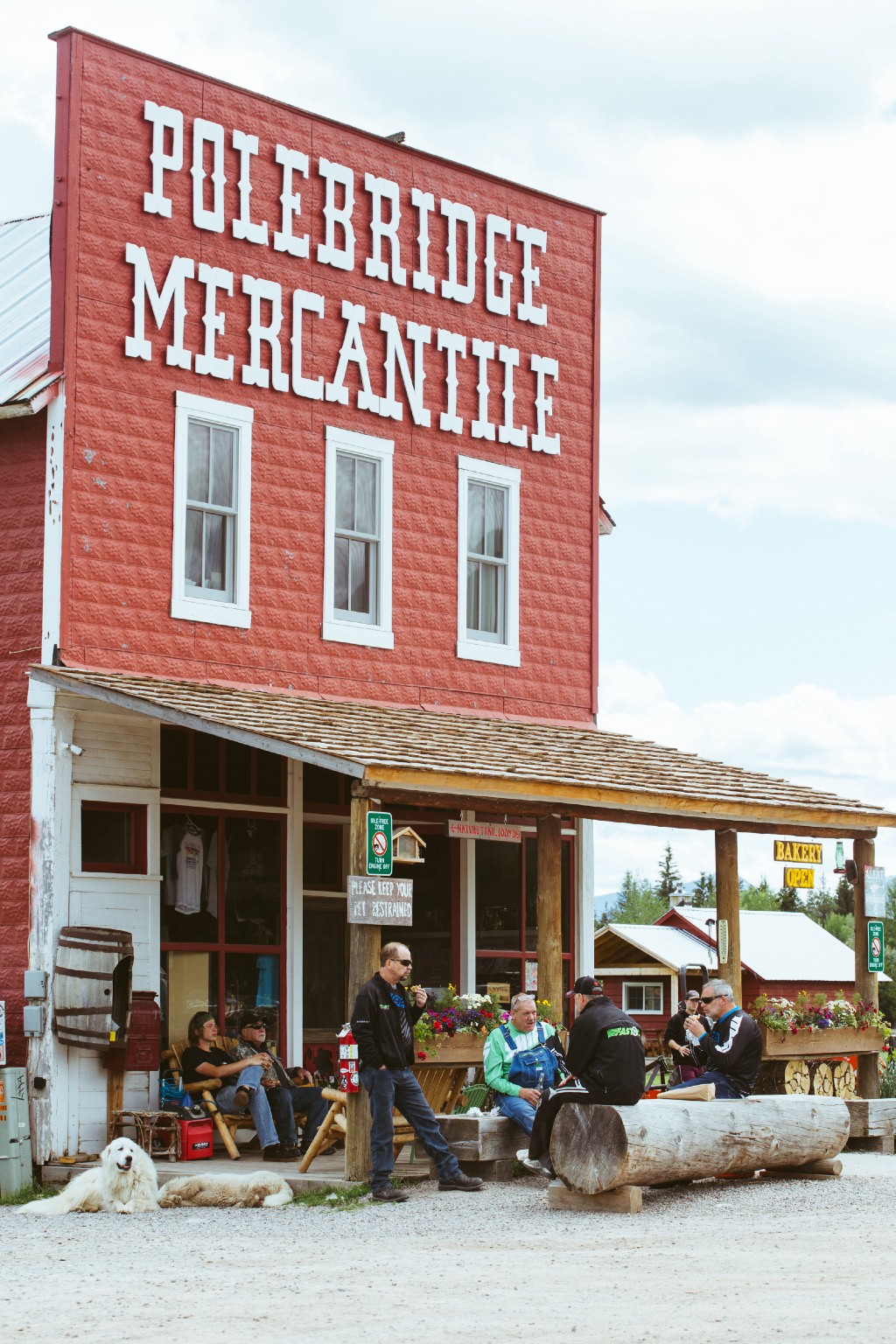
The daily pattern is simple: You get up with or before the sun, you bust your butt all day, and you get out early in the evening to play, whether that’s hiking, rafting, biking, floating the river, playing beach volleyball, hitting up the saloon, camping or paddleboarding. It’s the ultimate payoff, they said, because they can play as hard as they work.
“There is some back-breaking work you do, but then all you have to do is look up at the view,” O’Neill said.
There’s no shortage of such chores, because the heady days of summer are fleeting. “Whenever you’re bored or have downtime, there’s always that,” O’Neill said, pointing at the wood shed. “You’re always prepping for winter.”
Self-reliance is, perhaps ironically, a community concept around here, Hammerquist said, because the closest town, Columbia Falls, is 35 miles south on a road that rarely allows for speeds of more than 35 miles per hour if you value your car’s infrastructure. If you need something, you either have to burn up two hours driving just to get it, or you get creative with what you — and your neighbors — have on hand.
And what they’ve got up in Polebridge is an eclectic group of people who work together to survive in a place that is, at times, outright hostile. A wildfire can cut off road access, or a deep freeze and heavy snow can make it impassable.
“No man’s an island, and no woman’s an island,” Hammerquist said.
“We’re self-reliant to a large extent,” O’Neill added. “Without the community, it wouldn’t be possible.”
Polebridge itself is a small clearing in a valley otherwise full of grassy fields and trees. The Merc, built in 1914, is the central figure in town, but there are a few houses and trailers also visible down dirt lanes. During its booming ranching, homesteading, farming, and trapping days, the valley boasted two schools.
Directly next door to the Merc is the Northern Lights Saloon, which originally served as the homestead for the Merc’s original owner, William L. “Bill” Adair. Adair and his wife Emma built the Merc a mere four years after Glacier Park became a national park in 1910, and the interior rafters, still an original aspect of the building, bear his ax marks, and one of his saddlebags still hangs near the coffee station.
Adair set up shop after homesteading 160 acres with his brother in 1912. The town derived its name from a pole bridge spanning the nearby North Fork river, and received the moniker Polebridge once it opened a post office. In 1983, the Merc and surrounding outbuildings were added to the National Register of Historic Places.
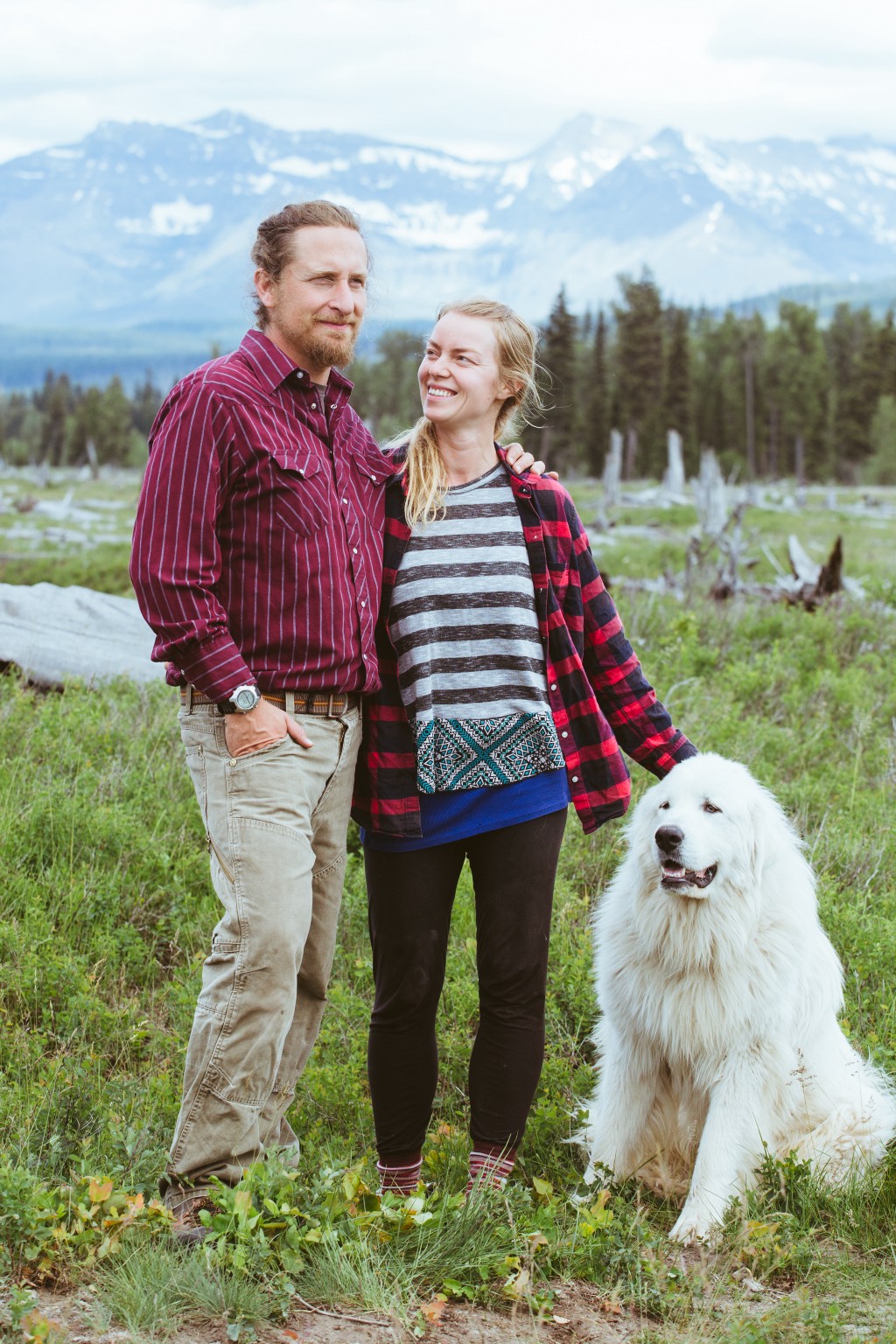
The Merc wasn’t equipped for a bakery until 1994; that has since become its most popular feature. Previous owner Dan Kaufman, a third-generation baker from Idaho, established the Merc as the provider of some of the best baked goods in this corner of the state, worth every minute of the drive or hike or cycle needed to obtain them.
Through all of its history, the Merc has served as an essential meeting place, but also a “grocer of last resort,” as Hammerquist says.
Hammerquist is quick to note that the hard work he and his crew does this summer is due in large part to a century of like-minded people who came before, enduring the harshness of the landscape in order to be part of it.
On the other side of the building lies the rest of the Merc’s campus, where 14 employees live during the summer and visitors can rent small, rustic cabins with propane-powered lights and no running water. The North Fork Hostel hosts more visitors nearby, and several private cabins are visible on a nearby ridge.
Otherwise, the Merc and the saloon are surrounded by grassland punctuated by weatherworn tree stumps and bordered by the North Fork of the Flathead River. Hammerquist and his crew have carved out a nature trail in a field adjacent to the saloon, which offers stunning views into Glacier Park while teaching about the ecosystem. Dubbed the Transboundary Flathead River Interpretive Trail due to its proximity to Canada — a mere 17 miles to the north — the trail is a 25-mile loop with eight stops offering information about the history, the people and the efforts that have kept this land so pristine.
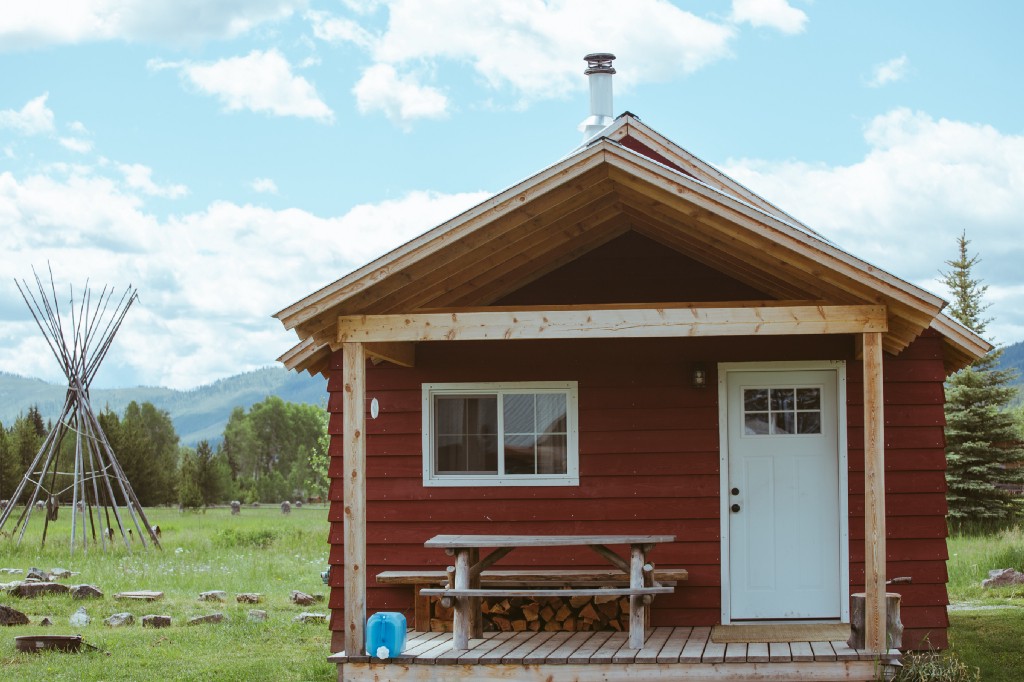
“Our obligation is to the land around us,” Hammerquist said. “It’s more so a home for grizzly bears than people.”
But, as its satellite internet suggests, the Merc isn’t trapped in time in all aspects. The barn in the back, which used to house the literal horsepower needed to get to town, is now clad in solar panels that provide nearly 90 percent of the electricity needed to run the campus (they still keep the old diesel generator for cloudy days and backup).
Hammerquist said it’s the largest privately owned solar array in Montana, and it was purchased with the help of a grant through the U.S. Department of Agriculture.
The garden, which suffers from a spectacularly short growing season, will be expanded and bolstered with a hoop house, which provides protection from the elements and adds temperature control capabilities. O’Neill, whose job is ensuring there’s enough of whatever happens to be needed in the most efficient way possible, also hopes to have a collection of honeybee hives soon.
“Any time we can reduce our town trips, it helps,” O’Neill said.
And while Hammerquist is interested in preserving the Merc’s history — the owners tend to refer to themselves merely as caretakers — he’s not averse to charting his own course. Under his ownership, the Merc is now open year-round, and the ever-popular baked goods are being sold at a storefront in the nearby resort town of Whitefish. The Merc has also been integral in bringing back the Root Beer Classic, a sled-dog race that cruises through the North Fork in late winter.
Essentially, Hammerquist and O’Neill are driven by the idea that if they can keep the Merc afloat, and leave it better than they found it, it can continue to play an important role in the lives of the people who will come here in the future.
They wanted to move to Polebridge because they cared about the land, but it also represented the rare chance to become something more and possibly better; to tap into the intrinsically human experience of not just being alone in nature, but also being alone with it, perhaps even remembering somewhere deep and ancient that this is part of us.
And by continuing to follow their roadmap of conservation and innovation, one that preserves the land and spirit of the North Fork for the foreseeable future, they hope to offer a place for others to have those same experiences. It’s a common thread shared in many of the stories they hear from visitors: People were here once, and had to come back with their families, to show them a place like this still exists.
“The measure of any person is their relationship to the living things around them,” Hammerquist said. “Maybe that’s just getting older. But if you want to feel a connection, get yourself out of a human-built environment.”
By lunchtime, the Merc is buzzing with energy. Cars and trucks pull up, and somewhat dazed patrons continue to file out, drawn to the Merc’s tantalizing bakery smells floating on the breeze.
Today, as every day, the baking staff will pump out up to 300 huckleberry bear claws, the most coveted of all the Danishes and sweet rolls emerging from their ovens. They’re purchased via an iPad with credit and debit card capabilities — or via a cash register from 1910, which is still used for cash purchases. Visitors snap pictures with smartphones rendered otherwise useless, and lie around in the shade of the North Fork’s only Elm tree, located in the saloon’s yard.

Hammerquist and O’Neill float among them, offering handshakes and back slaps to neighbors and encouraging the general exclamations about how fresh the air is and how the view just keeps getting better the further they get from town.
There are two types of people who show up here, Hammerquist has decided. The first are those who endure the drive and immediately wonder how they can get out of here. The other wonders at how they could manage to stay.
“They see these peaks, and they see this valley, and you kind of show people the way the world used to be and maybe could be,” he said.
